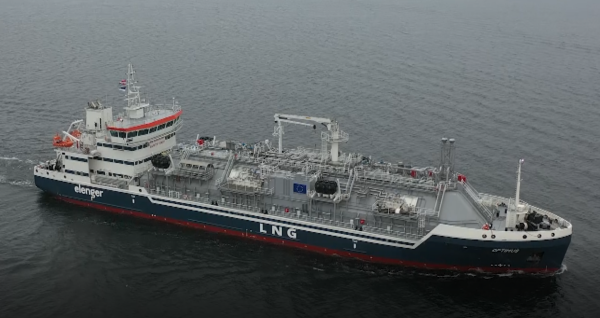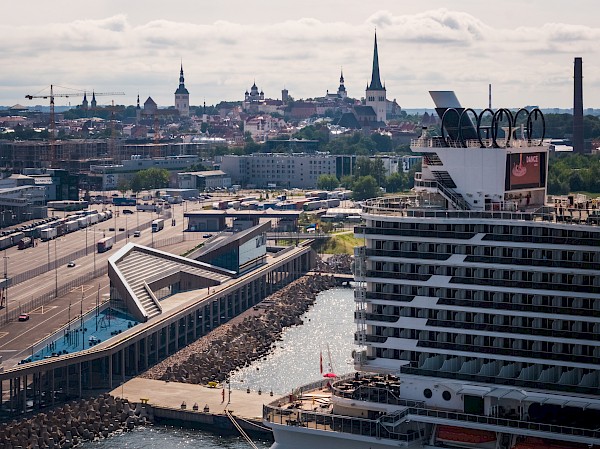Wednesday, November 10, 2021 - 14:09 by tallinn
LNG can now be bunkered ship-to-ship in one of the favourite cruise ship destinations – Tallinn. For shipping companies, a gas tanker means, above all, a secure supply of environmentally friendlier fuel, ease of use and time savings. In addition, the air at the port and surrounding areas will become cleaner, and the road transport load will decrease, since previously LNG bunkering was carried out from tanker trucks.
Energy group Elenger’s liquefied natural gas (LNG) bunkering vessel Optimus has arrived in the beginning of November to Estonia from a Dutch shipyard to become the first of its kind in the region. The service area of the LNG bunkering ship will comprise the part of the Baltic Sea centred around the Gulf of Finland. The ship, named Optimus, was christened with the Estonian Prime Minister Kaja Kallas, as the ship`s godmother. The first customer of Optimus is Tallink’s Megastar shuttle.
“Shipping globally is looking for new environmentally friendly solutions and today it is switching to liquefied natural gas. The LNG bunkering vessel operating in the area adds to the certainty that the ships currently being designed and built will be able to use LNG as fuel,” said Sergei Danilov, Head of Bunkering Operations at Elenger.
Almost a hundred metres in length Optimus can bunker passenger vessels and cruise ships, tankers, and cargo ships in ports and in offshore waters. Its tanks and pumps allow for up to 6000 m3 of liquefied natural gas to be delivered to clients at a rate of up to 1000 m3 per hour.
Since 2015, passenger and freight ships on the Baltic Sea have had to use environmentally friendlier fuels with low sulphur content. Switching to LNG almost entirely eliminates the emission of sulphur dioxide and fine particles and significantly reduces nitrogen oxide and CO2 emissions.
The greening of the shipping sector and to reduce greenhouse gas emission is a priority. The development and deployment of new fuels and energy solutions for the maritime sector is the most important pillar of this greening process. The energy transition in the shipping sector will require investments on the ship side but will also imply significant investments in infrastructure on the landside, in particular in ports.
“Together with its partners, the Port of Tallinn aims to transform Estonia into a hub for green infrastructure on the Baltic Sea, which would help to completely transform the transportation sector and provide an additional impetus to the renewable energy sector. Part of our plan is to also start offering cruise ships hydrogen bunkering capacity in the future,” said Margus Vihman, Member of the Management Board and Commercial Manager of the Port of Tallinn.
This year, cruise ships stopped 45 times in the Old City Harbour operated by Port of Tallinn and brought 63,164 cruise tourists to visit the Estonian capital. Before the crisis,in 2019 cruise ships visited Tallinn 338 times, while last year there were no cruise vessel calls. Most of the cruise ships that called Tallinn this year belong to cruise companies operating in the German market, however first UK and US based cruise lines restarted cruises in Baltic Sea region. 80% of the cruise tourists were German citizens, but, there were also citizens of Italy, Fran ce, Spain, the UK, the US, and other countries. Port of Tallinn and its partners hope next season to see more cruise ships in Northern Europe.


